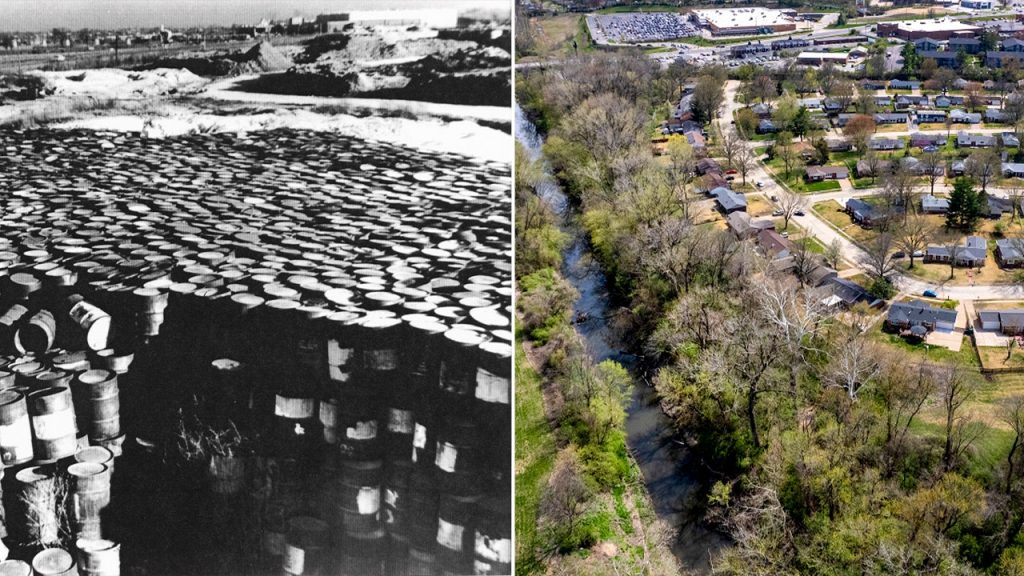Several suburban moms in St. Louis have been leading efforts to clean up toxic sites that have been contaminated for decades. They discovered that government officials had likely covered up mishandling of toxic waste from the Manhattan Project in Missouri. Senator Josh Hawley is pushing to extend compensation for those who may have been affected by the chemicals in St. Louis, as well as in other areas such as Kentucky and Tennessee. Mallinckrodt Chemical Works, a company contracted by the government, processed uranium for nuclear weapons, and internal memos showed concerns about health risks associated with the toxic waste.
The toxic waste was initially stored near St. Louis Airport and close to a creek that runs through North St. Louis County. The waste was left out in the open, and flooding has been a concern, as it could have carried contaminants downstream. The Army Corps of Engineers has been working to clean up Coldwater Creek, where historic contamination has been found. In the 1960s and 1970s, the waste was moved to West Lake Landfill in Bridgeton, Missouri, where it has been sitting for decades. The cleanup process has been slow, with advocates and lawmakers calling for faster action.
The cleanup efforts in St. Louis have faced challenges due to the complexity of dealing with historical contamination from decades ago. Radioactive material has been found along Coldwater Creek, and testing has shown elevated radiation levels in drainages that flow into the creek. The waste has been moved multiple times over the years, with homes eventually being built near the contaminated sites, such as West Lake Landfill. Advocates stress the urgency of the cleanup, noting that action should have been taken decades ago and that it is essential to address the contamination now.
The mothers leading the cleanup efforts, along with thousands of others in affected neighborhoods, have been advocating for a quicker and more thorough cleanup of the contaminated sites. They stress the importance of addressing the health and environmental risks associated with the toxic waste from the Manhattan Project. The internal documents and memos related to the handling of the chemicals have shed light on the extent of the contamination and the health hazards associated with it. Senator Hawley and other lawmakers are working to extend compensation for those who may have been affected by the toxic chemicals in St. Louis and other areas.
The history of the Manhattan Project’s toxic waste disposal in St. Louis has been a closely guarded secret for many years, but efforts to clean up the contamination are now underway. Advocates are pushing for a faster cleanup process and greater compensation for those impacted by the toxic chemicals. Historical testing has revealed contamination levels in Coldwater Creek and nearby areas, prompting calls for urgent action to address the health and environmental risks. The complexity of the cleanup efforts, as well as the challenges posed by the historical contamination, underscore the importance of continued advocacy and support for the affected communities in St. Louis.


